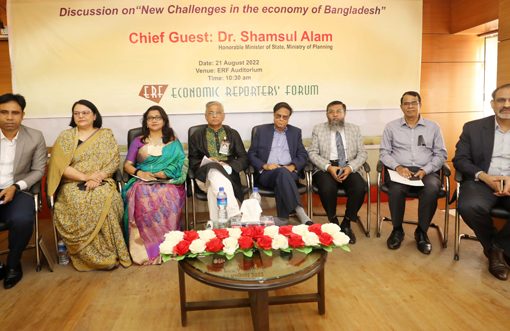Comfort in three markets but still concerns in three others for RMG export

Despite the reassurance of duty-free access from LDC, confidence has been gained in the United Kingdom, Canada, and Australia. Although these three countries are destinations for a total of 16% of garment exports.”
“The list of least developed countries (LDCs) awaiting graduation to developing status includes Bangladesh. The apprehension remains among garment exporters regarding whether duty-free access to various markets for product exports will remain unchanged even after transitioning to developing country status. For these manufacturers, the positive news is that even after becoming a developing country, Bangladesh will continue to enjoy duty-free access for its garment products in the United Kingdom and Canada. On the other hand, Australia has already assured that duty-free privileges will remain unaffected. These three countries are the destinations for a total of 16% of total garment exports.
The European Union (EU) is the largest market for garment products. After graduating from the LDC status, duty-free access to this market will remain unchanged for three years. However, to sustain the duty-free privileges, Bangladesh needs to fulfill the eligibility criteria for GSP Plus. The European Commission has further complicated GSP Plus for 2024-34. Although it has not been approved in the EU Parliament yet, if the complication is approved, Bangladesh will not gain GSP Plus. The other two major markets for garment exports, India and Japan, will continue to enjoy duty-free privileges after graduation from the LDC list. However, there is no assurance of a similar scenario in those cases. The combined destination for garment exports to the EU, India, and Japan accounts for 55% of the total.
Mohammad Abdur Razzaq, Chairman of the private research institution RAPID, mentioned that signing a Free Trade Agreement (FTA) with any country takes 5-10 years. The government has initiated steps to sign a Comprehensive Economic Partnership Agreement (CEPA) with India. This will also take time, similar to an FTA. Therefore, to extend the current duty-free privileges with Japan and India for an additional three to six years after 2026, active discussions need to take place on the government level. On the other hand, to gain GSP Plus in the EU, discussions on the governmental level are also necessary.
According to the Export Promotion Bureau (EPB), in the fiscal year 2022-23, garment exports amounted to $46.99 billion. Among these, exports under duty-free privileges amounted to $23.54 billion in the EU, $5.03 billion in the United Kingdom, $1.55 billion in Canada, $1.60 billion in Japan, $1.15 billion in Australia, and $1.01 billion in India.”
If everything remains in order, Bangladesh will be integrated with the developed countries’ market by 2026. Similar to the UK’s announcement, they will also provide duty-free access to Bangladesh until 2029. In addition, the government has recently initiated the Developing Countries Trading Scheme (DCTS) for progressive countries. Within this scheme, Bangladesh will enjoy duty-free access for 92 percent of products, including textile products.
The Canadian government has decided to provide duty-free market access under the General Preferential Tariff (GPT) scheme for developed countries. This scheme will grant duty-free entry to Bangladesh for manufactured garments and other products, alongside easing rules for garment production. The Canadian Parliament passed a finance bill on June 8, extending the GPT scheme until 2034.
Since 2003, Bangladesh has been enjoying complete duty-free and quota-free market access to Canada under the Least Developed Countries Tariff (LDCT) scheme. The LDCT scheme falls under the GPT scheme, which is renewed every ten years. The current version of the scheme is set to expire by the end of 2024.
Welcoming this decision, Faruque Hassan, the President of the Bangladesh Garment Manufacturers and Exporters Association (BGMEA), stated in a briefing last Sunday that Bangladesh will receive duty-free market access for its manufactured garments in Canada until 2034. Canada imports only 14% of its garments from Bangladesh, indicating significant potential for growth in this market. Taking advantage of the GPT Plus facility to expand garment exports further should be our proactive approach.
Three years ago, the World Trade Organization (WTO) reported that if Bangladesh loses its duty-free access under the LDCT, its garment exporters will face intense competition overnight. As a result, export earnings from garments could decrease by $5.37 billion. Although the pressure has slightly decreased due to the EU, the UK, and Canada’s measures, a comprehensive solution has not been reached yet.





Comment here